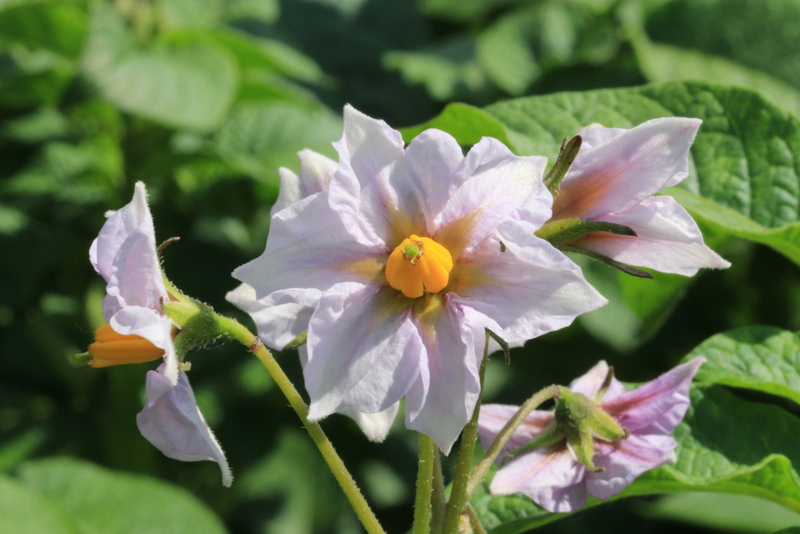Potato Extension
MN Area II Short Course set for March 4th
Producers, Researchers and Agribusiness: You are invited to attend the 23rd Annual Potato Workshop on Tuesday, March 4th 2014. This workshop gives us the opportunity to get together, learn and share ideas. We feel this program will be useful to everyone in the potato industry. We hope to see you there.
Phytoplasmas in Potatoes - Dr. Ian MacRae, University of Minnesota, Focus on Potato
This presentation will help producers, agricultural professionals and others in the North Central region and other potato producing areas recognize and manage the phytoplasma disease, Purple Top in potatoes. In this presentation, the biology of the phytoplasma causing Purple Top and its insect vector, the aster leafhopper, are discussed as well as potential management of the disease in potato production. The disease, its symptoms and impacts are reviewed and the epidemiology resulting from the life history, distribution and movement of the vector/pathogen complex is presented.
International Crop Expo - Potato Talks
The International Crop Expo will be held in Grand Forks, ND on February 19-20, 2014. Our invited speaker is Dr. Mike Thornton from the University of Idaho.
Results of Intended Herbicide Injury at the Winter Test
Potato plants that received dicamba and glyphosate treatments during the mid-bulking stage in 2013 were planted at the winter test in Homestead, FL. After 7+ weeks they were evaluated for damage and growth inhibition. The lower dicamba rate, 0.67 oz/acre, caused severe bubbling, leaf crinkling, twisting and bending of leaves as would be expected from a plant growth regulator herbicide. The dicamba treatment of 1.3 oz/acre was probably too much dicamba because few plants emerged under this treatment. Like in soybean and other crops, dicamba can be very active at low rates in potato seed.
NPPGA Research Reporting Conference
Reports from 2013 potato researchers. Come ready to learn about what was found this past year. Topics include breeding, entomology, pathology, fertility, and weed science.
NPPGA Represented at Potato Expo Trade Show
At least eight exhibitors based in NPPGA's footprint were among the 160 exhibitors at the POTATO EXPO 2014 trade show last week in San Antonio. Many local reps from companies based outside our region worked in booths as well.
Gary Secor wins the NPC Meritorious Service Award
Dr. Gary Secor is the winner of the NPC Meritorious Service Award. Secor became a Professor in the Plant Pathology Department at North Dakota State University (NDSU) in 1978 During his long and distinguished career at NDSU, Dr. Secor has served as the potato breeding coordinator for six years and the interim director of the potato breeding program for three years.
Gregg Halverson wins 2013 Potato Man for All Seasons award
Gregg Halverson, president and chief executive officer of Black Gold Farms headquartered in Grand Forks received the 2013 Potato Man for All Seasons award last week in San Antonio. The award is presented by The Packer and TheGrower.com in conjunction with the National Potato Council.
Carl Hoverson wins 2013 NPC Environmental Stewardship Award
Congratulations to Carl Hoverson of Hoverson Farms in Larimore, N.D., for winning the 2013 NPC Environmental Stewardship Award. The annual award is a component of the Pesticide Environmental Stewardship Program, a partnership between NPC and the U.S. Environmental Protection Agency, to protect the environment and promote the safe and effective use of pesticides.
Utilization of NAA as a Seed Treatment to Control Stem Number in Russet Burbank
Altering the number of stems can be an effective way to control tuber set and size of physiologically old seed. This study examined the effect of 1-naphtheneacetic acid (NAA) treatments on seed and in-row seed spacing. Russet Burbank average stem number was reduced from 3.1 to 2.5 when 0.3 fl oz/ton of NAA was applied on seed prior to planting. Decreasing in-row seed spacing by 2 inches and applying NAA caused the average stem number to be the same as the untreated check. NAA can manipulate stem number to allow growers to plant a higher density of seed per acre.
Document Actions





